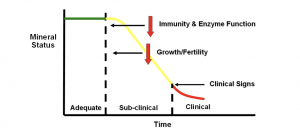Justin Waggoner, Ph.D., Beef Systems Specialist
“Silage Harvest: Think and Practice Safety First”
One of the busiest, most fast paced operations that occur this time of year is silage harvest. Cutters and choppers in the fields, trucks racing from the field to the pile or bunker, multiple tractors pushing and packing silage. The speed at which we can harvest silage today is amazing, but we should never allow the speed at which we can accomplish a task to compromise safety. In the infamous words of Dr. Keith Bolsen “Every silage accident could have been prevented.” Listed below are a few things to consider during this year’s silage harvest.
- Don’t become complacent. Stay aware of your surroundings. Let’s face it, there are a lot of highly repetitive operations in putting up silage. One of the number one factors that leads up to an accident is almost always complacency or lack of situational awareness.
- Truck drivers should always slow down when approaching houses and intersections on all roads, every time. Those houses along the road belong to our neighbors and friends, some of which have children. The increased traffic on gravel roads creates dust, and the crops are tall, both of which reduce visibility at intersections. Our neighbors should not fear going to their mailbox due to our silage trucks.
- People (especially children) should never be allowed near a drive over pile or bunker silo during filling. If people have to approach the area, get on the radio to inform the drivers/operators. Those on the ground in the area should always wear a bright colored orange safety vest.
- Never fill higher than the top of the bunker wall. This happens more than it should and creates a dangerous situation from the day the silage is packed until it is removed. The pack tractor cannot see the edge of the bunker well, if at all. The silage does not get packed well (which leads to poor silage) and the edge of the silage is unstable and more likely to collapse. Don’t do it.
- Be aware of steep slopes. To reduce the risk of tractor roll‐over, a minimum slope of one in three on the sides and end of piles should be maintained.
- Never inspect or make repairs to equipment near the bunker or pile. Equipment should be removed from the area as soon as possible. Repairs almost always involve people on foot and potentially people who may not be familiar with silage activities and the associated risks.
For more information, contact Justin Waggoner at jwaggon@ksu.edu.



